Beautiful Plants For Your Interior

18 Different Types of Roses That Can Enhance Your Garden
When it comes to our gardens and gardening, roses are considered one of the most beloved and popular flowers to gardeners, known for their beauty and fragrance. There are many different types of roses, each with its unique characteristics and growing requirements. the variety of roses available to gardeners and flower enthusiasts is vast.
Roses can however be classified into three main rose categories though, Old Garden Roses, Wild Roses, and Modern Roses, as we will discover there are several differences between between these classifications and the flowers.
Different Types of Roses: A beginners guide to help you on your way to understanding those different types.
Old Garden Roses are roses that were developed before the 19th century and have been cultivated for hundreds of years. Their romantic fragrance characterises them, their repeat blooming, and their ability to tolerate a wide range of growing conditions. They are typically less fragrant and more disease-resistant than modern roses.
Alba Rose (Rosa Alba)
The Alba Rose, scientifically known as Rosa alba, is a classic and elegant flower with a rich history dating back to ancient times. This rose variety is renowned for its pure white or pink flowers, often boasting numerous delicate petals. The plant itself is characterised by distinctive blue-green foliage, adding to its allure. Known for its strong fragrance, the Alba Rose has been a favourite in gardens for centuries, captivating enthusiasts with its timeless beauty and enchanting scent.

Different Types of Roses: Old Garden Roses – The Alba Rose (Rosa Alba)
Centifolia Rose (Rosa Centifolia)
The Centifolia Rose, scientifically known as Rosa centifolia, is a captivating flower cherished for its abundant petals and delightful fragrance. Also referred to as the ‘Cabbage Rose’ or ‘Provence Rose’, this species is celebrated for its large, globular blossoms that come in shades of pink, white, and dark red-purple. With its hermaphroditic nature, it is pollinated by insects and is self-fertile. This classic rose variety continues to be prized for its elegance and romantic symbolism in gardens and floral arrangements worldwide.
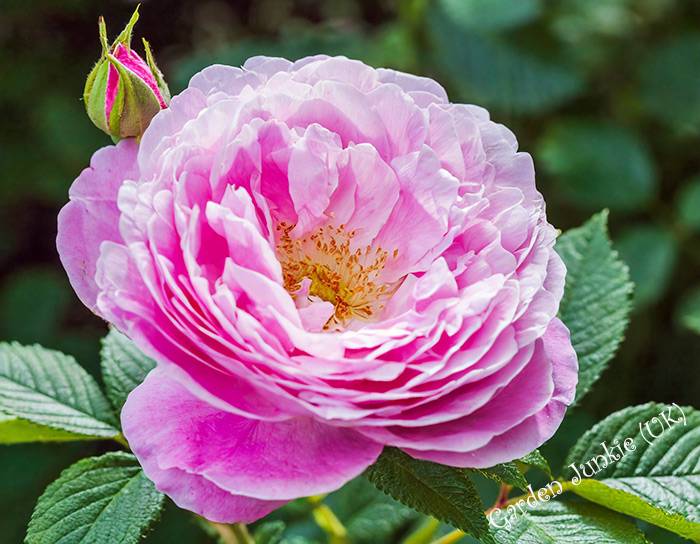
Different Types of Roses: Old Garden Roses – Centifolia Rose (Rosa Centifolia)
Damask Rose (Rosa Damascena)
The Damask Rose, scientifically known as Rosa damascena, is a revered flower celebrated for its exquisite beauty and aromatic essence. Renowned for its historical significance and cultural importance, this species has been cultivated for centuries for its fragrant, pink flowers. The Damask Rose is widely used in the production of rose oil, rose water, and perfumes due to its rich, complex scent profile.
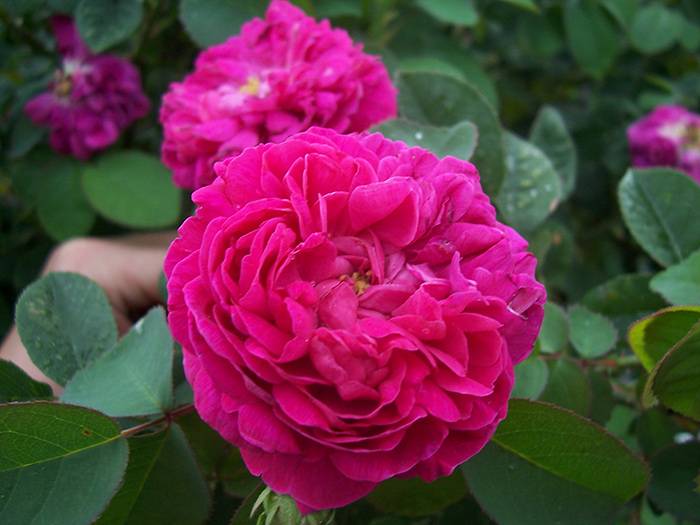
Different Types of Roses: Old Garden Roses – Damask Rose (Rosa Damascena)
Gallica Rose (Rosa Gallica)
The Gallica Rose, scientifically known as Rosa gallica, is a historic and highly regarded flower cherished for its timeless beauty and cultural significance. Originating in central Europe, this species has been cultivated since ancient times, making it one of the oldest garden roses. Known for its vibrant hues of rose-red and pink, the Gallica Rose typically features an open blossom displaying its stamens, exuding an enchanting fragrance.
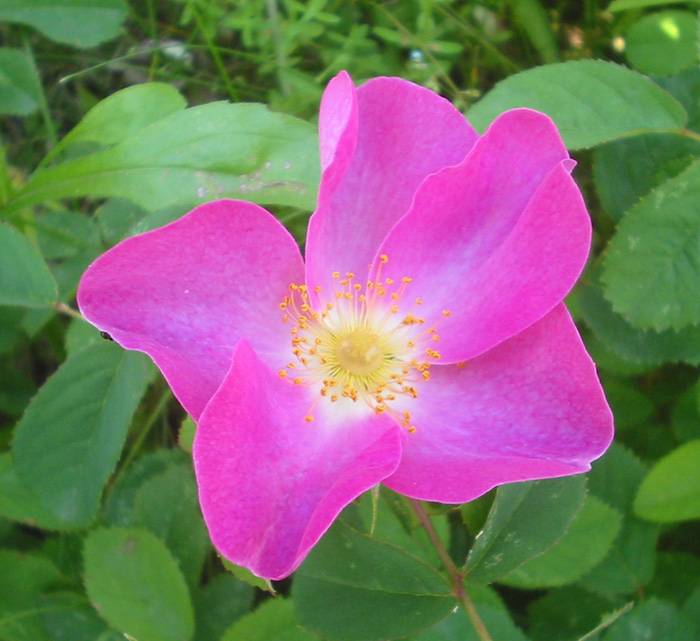
Different Types of Roses: Old Garden Roses – Gallica Rose (Rosa Gallica)
Moss Rose (Rosa Muscosa)
The Moss Rose, scientifically known as Rosa muscosa, is a distinctive and captivating flower renowned for its unique mossy or hairy appearance. This rose variety is characterised by its vigorous branches and cupped pink flowers, often accompanied by dark green, moss-covered stems. The presence of resinous hairs on the blooms gives them a mossy texture, hence the name “Muscosa.”
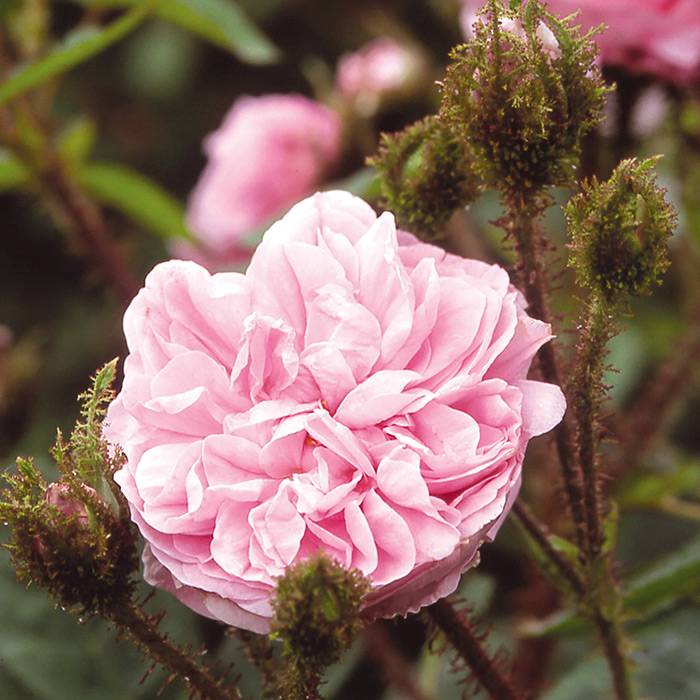
Different Types of Roses: Old Garden Roses – Moss Rose (Rosa Muscosa)
Portland Rose (Rosa Portlandica)
The Portland Rose, scientifically known as Rosa Portlandica, is a captivating and historic flower celebrated for its timeless elegance and fragrance. Originating in the late 18th century, this rose variety is revered for its deep red or pink, very double blooms and its compact, tidy habit. With its preference for rich soil and its repeat-flowering nature, the Portland Rose has been a beloved choice for gardens, contributing to its enduring popularity.
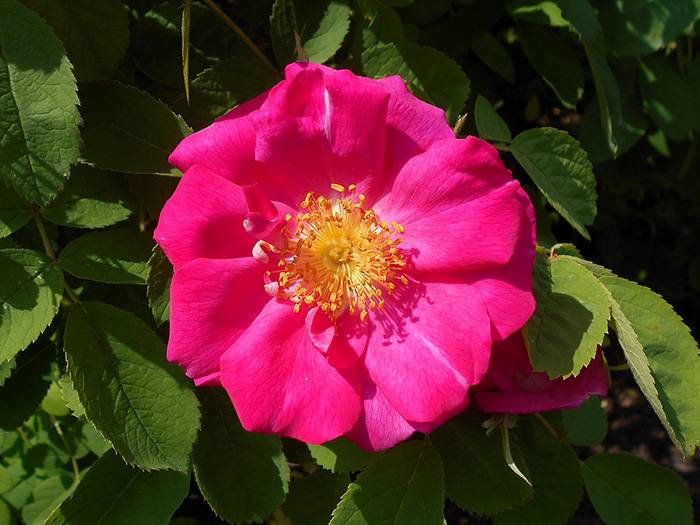
Different Types of Roses: Old Garden Roses – Portland Rose (Rosa Portlandica)
Wild Roses
Wild roses, also known as species roses, are the ancestors of the many cultivated varieties found in gardens and floral arrangements today. These roses are native to various regions around the world and are known for their hardiness and ability to thrive in diverse climates. Wild roses typically have five petals and come in a range of colours, including white, pink, and red, adding natural beauty to their surroundings.
Dog Rose (Rosa canina)
The Dog Rose, scientifically known as Rosa canina, is a wild and enchanting flower that graces hedgerows and woodlands with its delicate beauty. This species is characterized by its pale pink or white blossoms and vibrant red hips, which are rich in vitamin C and often used in herbal teas and remedies. The Dog Rose’s climbing habit and sharp thorns contribute to its hardy nature, making it a resilient and adaptable plant.
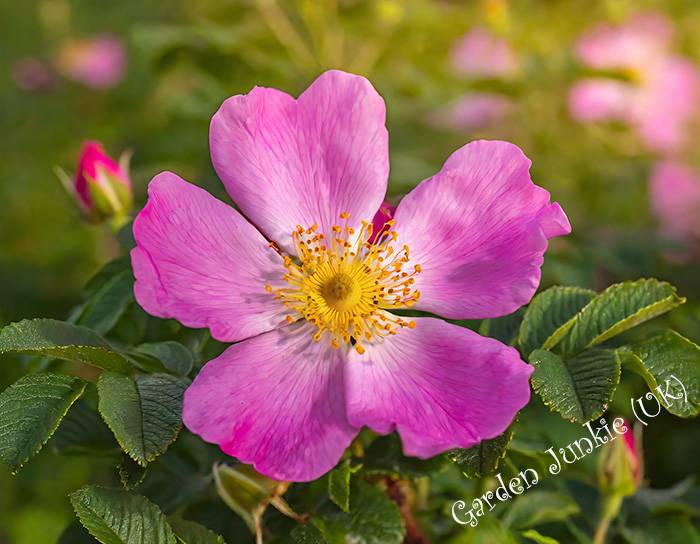
Different Types of Roses: Wild Roses – Dog Rose (Rosa canina)
Field Rose (Rosa arvensis)
The Field Rose, scientifically known as Rosa arvensis, is a graceful and resilient wildflower that flourishes in meadows, woodlands, and hedgerows. This species is distinguished by its delicate white or pale pink blossoms and its vigorous climbing habit, adorning natural landscapes with its understated beauty. The Field Rose’s robust nature and ability to thrive in diverse environments make it a valuable contributor to local ecosystems.

Different Types of Roses: Wild Roses – Field Rose (Rosa arvensis)
Eglantine (Rosa eglanteria)
The Eglantine, scientifically known as Rosa eglanteria, is a charming and aromatic wildflower that graces woodlands and hedgerows with its delicate beauty. This species is characterised by its single, pale pink blossoms and its sweet, musky fragrance, adding a touch of elegance to natural landscapes. The Eglantine’s vigorous growth and prickly stems contribute to its hardy nature, making it a resilient and adaptable plant.
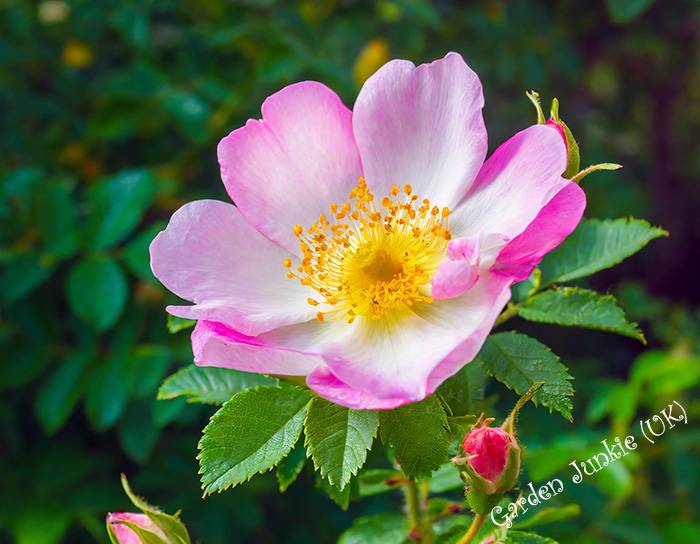
Different Types of Roses: Wild Roses – Eglantine (Rosa eglanteria)
Sweetbrier (Rosa rubiginosa)
The Sweetbrier, scientifically known as Rosa rubiginosa, is a captivating wild rose celebrated for its delicate beauty and aromatic allure. This species is distinguished by its single, pale pink blossoms and its sweet, apple-like fragrance, adding a touch of charm to natural landscapes. The Sweetbrier’s vigorous growth and dense, thorny thickets make it a valuable contributor to local ecosystems, providing shelter and sustenance for wildlife.
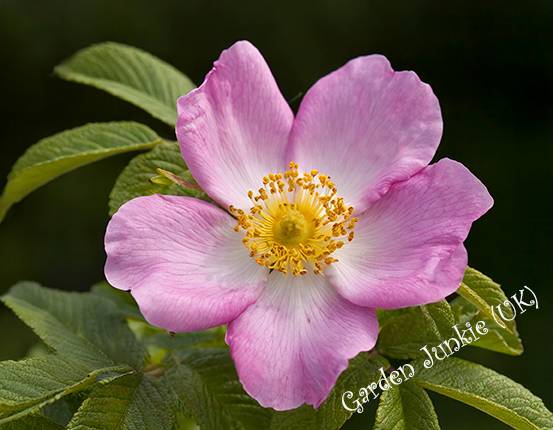
Different Types of Roses: Wild Roses – Sweetbrier (Rosa rubiginosa)
Burnet Rose (Rosa spinosissima)
The Burnet Rose, scientifically known as Rosa spinosissima, is a resilient and captivating wild rose that thrives in coastal and upland habitats, gracing these rugged landscapes with its delicate beauty. This species is characterised by its single, white or creamy blossoms and its sweet, subtle fragrance, adding a touch of elegance to its natural surroundings. The Burnet Rose’s low-growing habit and dense, thorny foliage make it well-suited for stabilising sandy soils and providing habitat for wildlife.
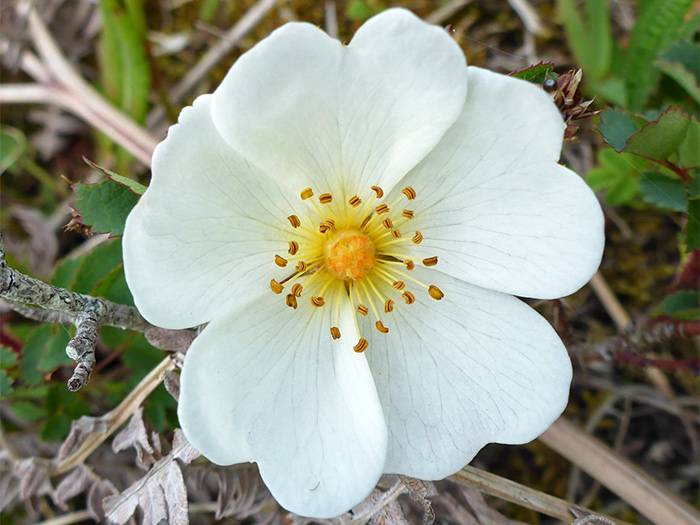
Different Types of Roses: Wild Roses – Burnet Rose (Rosa spinosissima)
Modern Roses
Modern roses, a category that has significantly enriched the world of roses, encompass a diverse range of hybrid varieties that have been developed since the late 19th century. This category includes popular types such as hybrid tea roses, floribunda roses, grandiflora roses, and others, each celebrated for its unique characteristics and appeal.
Modern roses are the result of extensive breeding efforts aimed at enhancing traits such as colour range, bloom form, disease resistance, and overall garden performance. These roses have captivated enthusiasts and gardeners alike with their vibrant blooms, extended flowering periods, and adaptability to various growing conditions.
Hybrid Tea Rose
The Hybrid Tea Rose is a beloved and iconic flower renowned for its elegant form, vibrant colours, and enchanting fragrance. This rose variety, a result of crossbreeding between hybrid perpetuals and tea roses, is celebrated for its high-centred, single blooms on long stems, making it a popular choice for cut flowers and floral arrangements. With a diverse colour palette and a wide range of scents, the Hybrid Tea Rose offers a stunning visual and olfactory display, captivating enthusiasts with its classic appeal and timeless beauty.
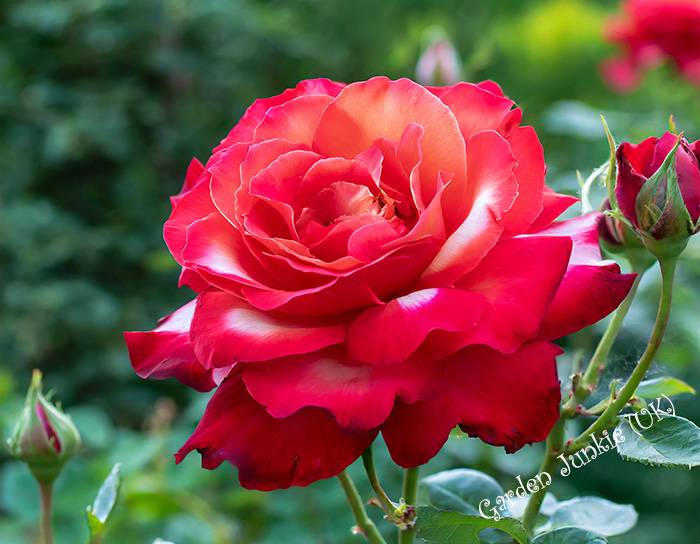
Different Types of Roses: Modern Roses – Hybrid Tea Rose
Floribunda Rose
The Floribunda Rose is a delightful and versatile flower known for its abundant clusters of blooms and vibrant colours. This rose variety, originally a cross between Hybrid Teas and Polyantha roses, is celebrated for its profuse flowering and compact, bushy growth habit. With a diverse range of colours and a long blooming season, the Floribunda Rose offers a stunning visual display, making it a popular choice for garden borders and landscaping. Its resilience, disease resistance, and low maintenance requirements have endeared it to gardeners.
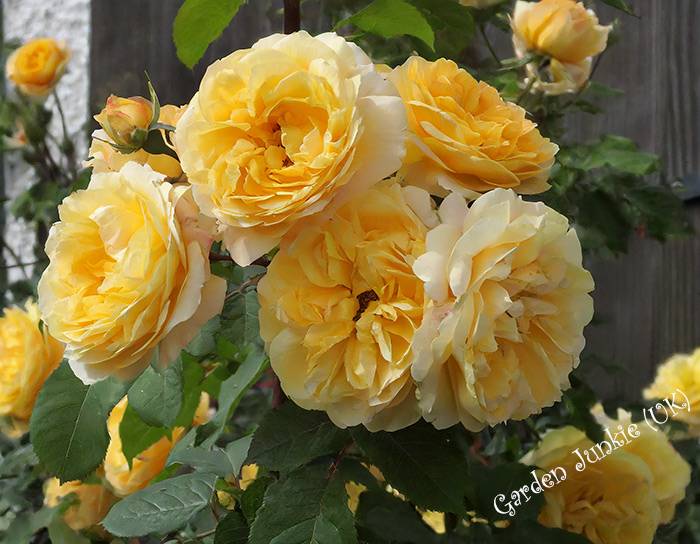
Different Types of Roses: Modern Roses – Floribunda Rose
Grandiflora Rose
The Grandiflora Rose is a striking and elegant flower known for its tall, upright growth habit and large, showy blooms. This fairly new rose variety is a cross between Hybrid Tea and Floribunda roses and is celebrated for its impressive floral displays and vigorous growth. With its ability to produce both single and clustered blooms in a wide range of colours, the Grandiflora Rose offers a stunning visual spectacle, making it a popular choice for garden focal points and cut flower arrangements. Its combination of the best traits from its parent varieties, including the elegance of Hybrid Teas and the abundant flowering of Floribundas,

Different Types of Roses: Modern Roses – Grandiflora Roses
Climbing Roses
Climbing Roses are captivating and versatile roses, celebrated for their ability to gracefully ‘climb’ trellises, fences, and arbours, adding vertical interest and charm to gardens and landscapes. These roses, characterised by their long, flexible canes and the profusion of blooms, offer a stunning visual display with a wide range of colours and forms. Their vigorous ‘climbing’ habit and repeat flowering make them a popular choice for creating romantic and picturesque garden features. With their ability to bring height, fragrance, and a touch of old-world charm to outdoor spaces.
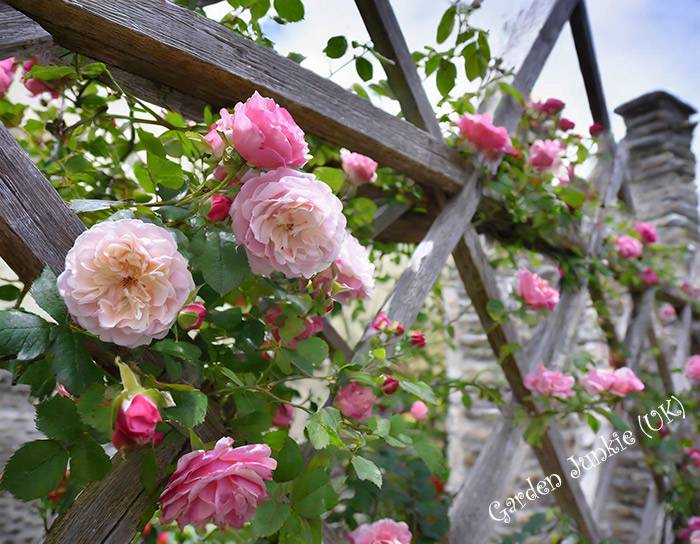
Different Types of Roses: Modern Roses – Climbing Roses
Shrub Roses
Shrub Roses, known for their versatility and resilience, are cherished for their low-maintenance nature and abundant, clustered blooms. These roses, ranging from compact to sprawling in growth habit, offer a diverse array of colours, forms, and fragrances, making them a popular choice for garden borders, mass plantings, and natural landscapes. Their ability to thrive in various climates and soil conditions, coupled with their disease resistance and minimal pruning requirements, has endeared them to gardeners and landscapers.
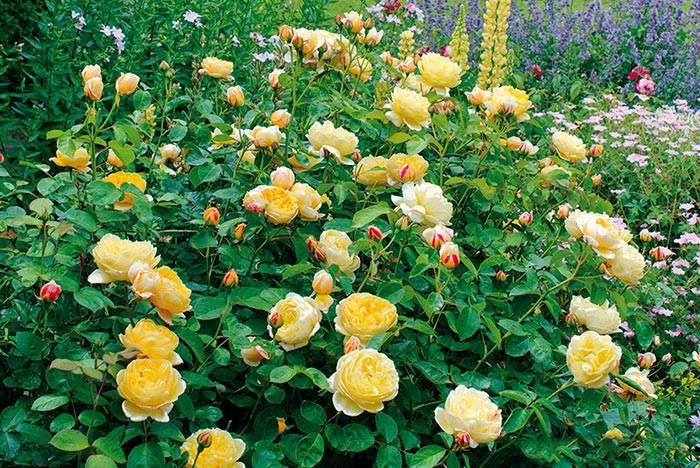
Different Types of Roses: Modern Roses – Shrub Roses
Miniature Roses
Miniature Roses, beloved for their petite size and delicate blooms, are cherished for their versatility and ornamental value. These small roses, which typically grow to a height of 15cm – 45cm (6-18 inches), offer a charming visual display with a wide range of colours and forms, making them a popular choice for small gardens, containers, and indoor spaces. Their compact growth habit and continuous flowering make them an ideal option for adding colour and beauty to limited spaces.

Different Types of Roses: Modern Roses – Miniature
English Rose
The English Rose, a beloved and iconic flower, is renowned for its timeless beauty, captivating fragrance, and diverse array of forms and colours. Bred by David Austin, these roses are celebrated for their old-world charm, combining the elegance and fragrance of traditional roses with the repeat-flowering and disease-resistance of modern varieties. Their full, cupped blooms and rich, evocative scents have made them a popular choice for gardens, bouquets, and floral arrangements.

Different Types of Roses: Modern Roses – English Rose
FAQs
How Do I Care For My Rose Bushes?
Roses are relatively easy to care for, but they do require some attention to thrive. Here are some basic tips for caring for your rose bushes:
Choose the right location: Roses need at least 6 hours of sunlight per day. They also prefer well-drained soil that is rich in organic matter.
Plant at the right depth: The bud union, the swollen area where the stem meets the roots, should be just below the surface of the soil.
Water regularly: Roses need about 1 inch of water per week during the growing season. Water deeply and less frequently, rather than shallowly and more often.
Fertilize regularly: Roses need a balanced fertilizer every 4-6 weeks during the growing season.
Prune regularly: Roses should be pruned in the spring before new growth begins. Remove dead, diseased, or damaged wood.
Protect from pests and diseases: Roses are susceptible to several pests and diseases. Watch for signs of trouble and take appropriate action.
With a little care, your rose bushes will reward you with years of beautiful blooms.
What Are Some Companion Plants For Roses?
Companion planting can enhance the growth and beauty of your roses while attracting beneficial insects and deterring pests. Here are some suitable companion plants for roses:
Lavender: Lavender’s fragrance repels pests and attracts beneficial pollinators.
Yarrow: Yarrow attracts beneficial insects and is known to repel pests like aphids.
Garlic: Garlic’s strong scent deters pests and is a versatile culinary herb.
Marigolds: Marigolds release compounds that repel harmful nematodes from the soil.
Sweet alyssum: Sweet alyssum attracts beneficial insects and adds a splash of color to your garden.
Conclusion
To conclude our ‘different types of roses‘ post, which we hope you have found informative, its intended use is to glimpse into the world of roses, which offers a captivating array of diversity, with each type of rose bringing its unique charm and beauty to gardens, floral arrangements, and special occasions.
From the timeless elegance of hybrid tea roses to the abundant clusters of floribunda roses and the graceful stature of Grandiflora roses, there is a perfect rose type for every preference and setting.
Whether you are drawn to the historical significance of old garden roses, the vibrant hues of modern hybrid varieties, or the delicate beauty of climbing roses, the appeal of roses is truly timeless.
By understanding the distinct characteristics and growing requirements of different rose types, you can gain a deeper appreciation for their enduring allure. Whether adorning a trellis, brightening a flower bed, or gracing a vase, roses stand as enduring symbols of love, beauty, and elegance.
